 |
|
| You are here: Index > Surveys of Secondary Worlds > Kill la Kill | |
Reviewing Kill la Kill (2014)[written on 05-22-2025]I've been watching anime for about ten years now. Diving headfirst into the internet (with some parental guidance, thank goodness) meant that discovering its bedrock was inevitable, and anime is certainly a part of the internet's culture. It was only fitting, then, that my first anime was Studio Trigger's Kill la Kill, which may just be the most anime anime to ever exist. Just about every notable trope of anime is on display in this series: there's the fanservice, the bureaucracy, and the incredibly over-the-top violence that sets it apart from our cartoon equivalent on our side of the Pacific. It set a good precedent for me and what I should expect from that industry, and ever since I have considered it to be one of if not my favorite anime. But now I've rewatched it, and do I feel the same way now that its contents are fresh on my mind? In some ways yes, but I've changed over the past ten years. 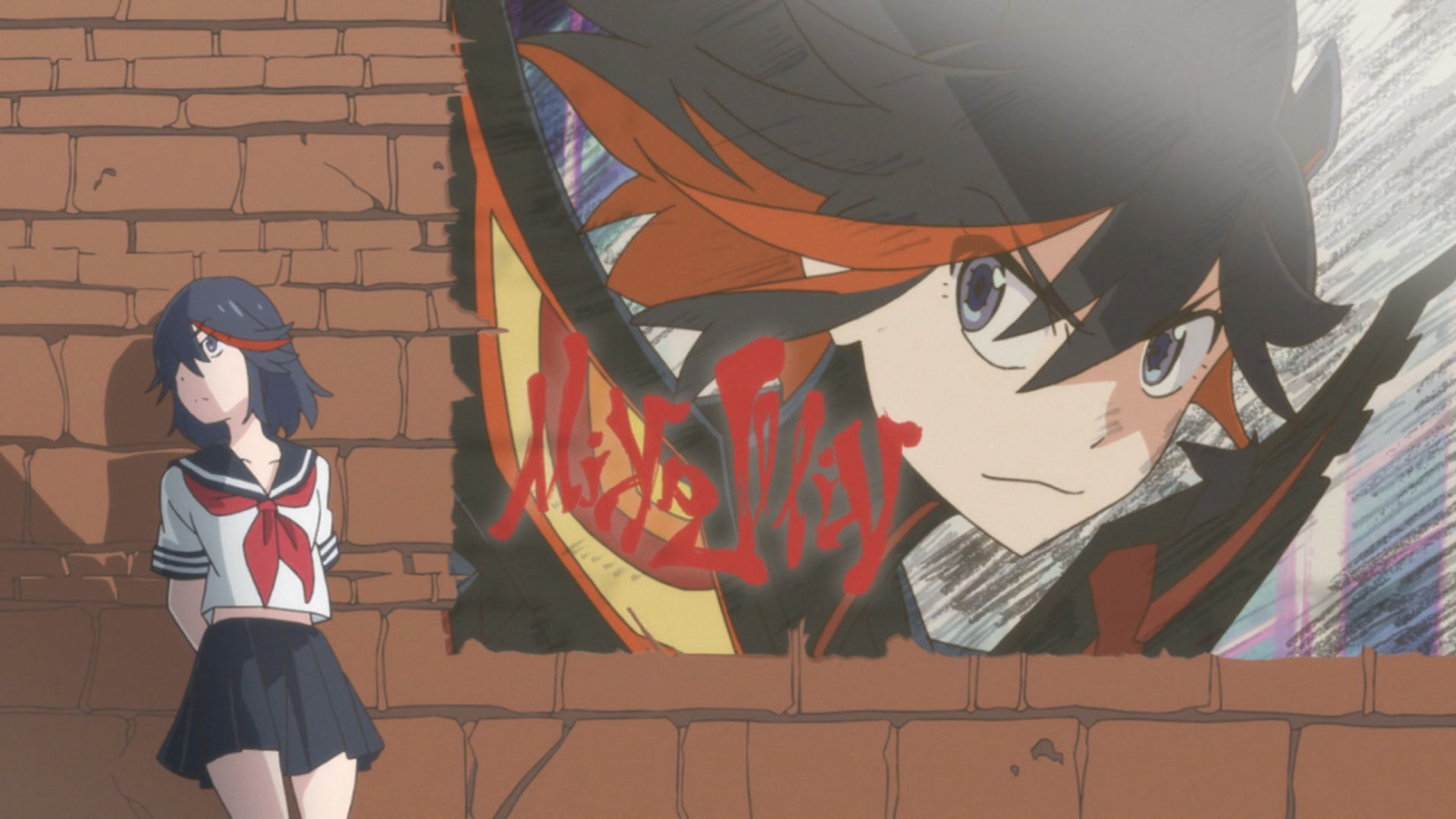
Personal Scorethis criteria uses the DecentFilms rating formula.Letter-Grade Recommendability: A The mysterious murder of her father sends a young delinquent on a quest for revenge. In her search she comes across Honnoji Academy, a totalitarian school system with clues as to the killer's identity. Challenged to fight for the truth, Ryuko Matoi enrolls in the academy and takes on its members with the help of a living sailor outfit named Senketsu and half of a giant scissor blade. To get this right out of the gate, this anime requires a higher tolerance to mature content than the average tourist has. Kill la Kill earns its rating and then some - just watch the pilot and you get very heavy fanservice. Said fanservice is so closely tied to the metaplot that it quite literally IS the plot in many respects, taken comically serious throughout. Just about every significant character is going to be in some manner of undress or nudity to the point that it manages to desensitize, and then the violence wakes you back up. Blood is a major motif of the series - not a surprise for an anime titled "Kill la Kill" - and there are elements of gore and body horror that play critical parts in the action. I almost find the popularity of the series surprising given how off-putting these traits tend to be for newcomers, and if you have a distaste for such content then I would honestly say to not waste your time. 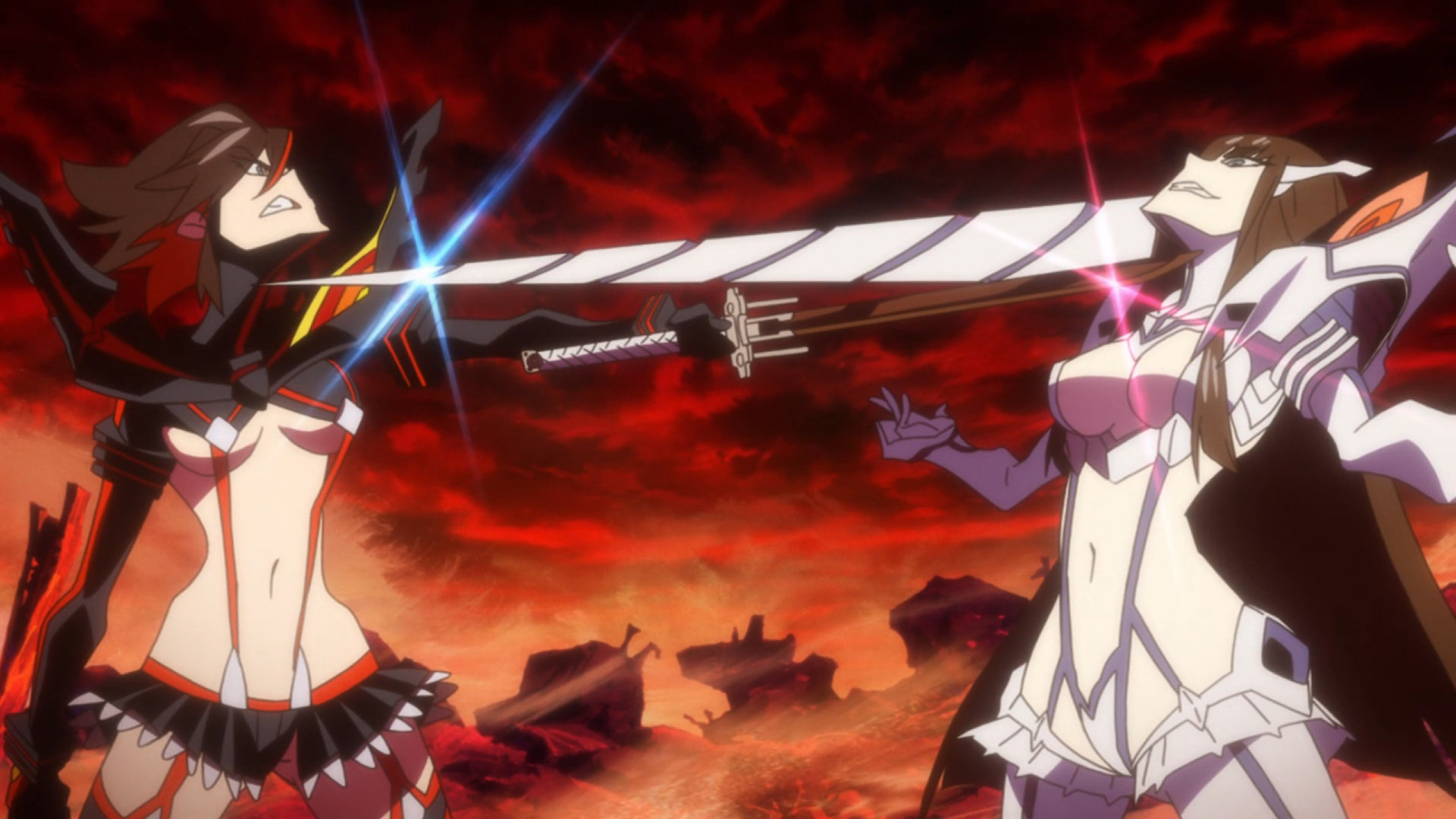
If you're like me and are fine with that, however, then you're in for a real ride. What I did find very interesting is that, in spite of what has been mentioned, there is actually a strong western inspiration here. If you're familiar with Hiroyuki Imaishi and his previous work, Panty & Stocking, then you know that he has an understanding of cartoons and western animation. There are several instances of western humor present, far more slapstick and humorous musical numbers than you typically expect from anime. Ryuko herself is very much a western superhero archetype, been thrown in over her head yet keeping a strong individualistic core. This makes it an interesting hybrid of influences and provides an almost universal appeal on a cinematic level. This is what drew me in most of all and what I noticed the most when I rewatched it years later. Kill la Kill is a coming-of-age story, specifically for women. Ryuko Matoi is a young woman who, amidst a quest for revenge, is coming to terms with her maturity. The theme of her fading innocence is a core theme of the story, her newfound outfit an incredibly skimpy garment that forces her to confront the reality of her body. At first at odds with these changes, she slowly accepts her maturity with Senkestu as the catalyst, through which she finds her place in the world and amongst her peers. Accepting herself for who she is and the messed-up past she was born into is a key part of her maturing into a full-fledged adult by the end of the series. There's a "Shadow the Hedgehog" aspect that's very palpable here, and I think it was handled quite well. 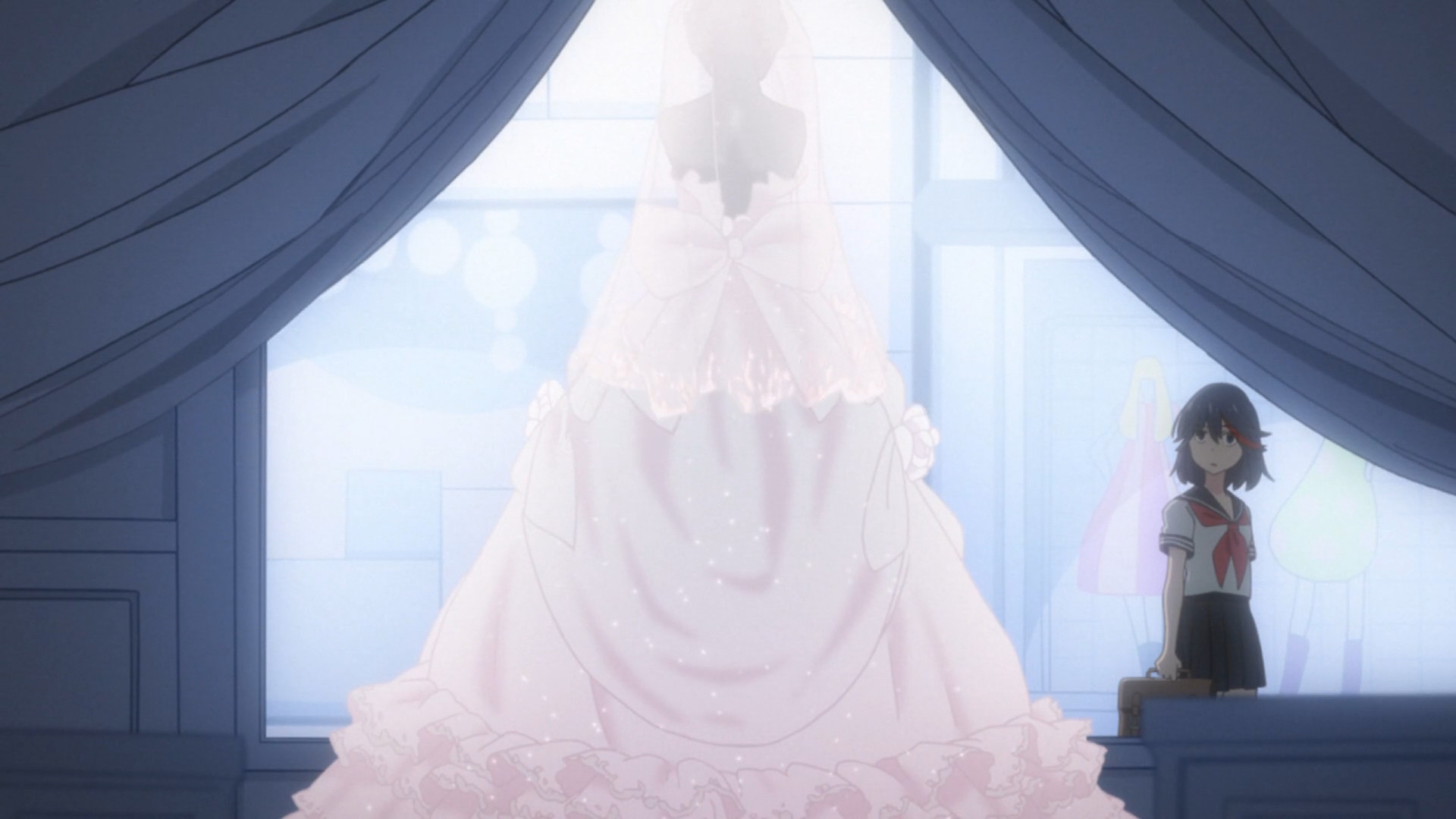
On the flip-side of the coin is the other central player in the story, Satsuki Kiryuin. What I found most interesting about rewatching Kill la Kill was how much I understand Satsuki's story the second time around; she's the ruthless dictator of Honnoji Academy, her intelligence and tenacity admirable qualities that win you over to her cause. Fascism is a key theme of her story, as she seeks to mold a militaristic force out of the students she governs, but there are players like Ryuko who refuse to conform to her mandates. While her form of governance isn't rejected - it's a net positive in the grand scheme - she becomes more accepting of the outliers and quirks of the people she's placed about her. Watching her go from a self-destructive path to one of hope and real comradery is a refreshing development in the story and one I enjoyed more than I did on the first watch. These two women and their stories are really the primary focus of the story, but there really are no weak characters in the show; I liked everyone involved and they got decent chacterization despite just how much is going on. The plot is so insane in scope and scale, starting with a fairly standard formula before just jumping the shark and exploding outwards in stakes, eventually affecting the fate of the world. The show is aware of its lightning pace, and it's another thing that can certainly throw viewers for a loop if you're used to slower shows. I noticed this on my rewatch as, having watched so much more since, I now see just how fast things move. I do not hold this against the anime, as I was able to keep up, and the elements presented had sufficient coverage. 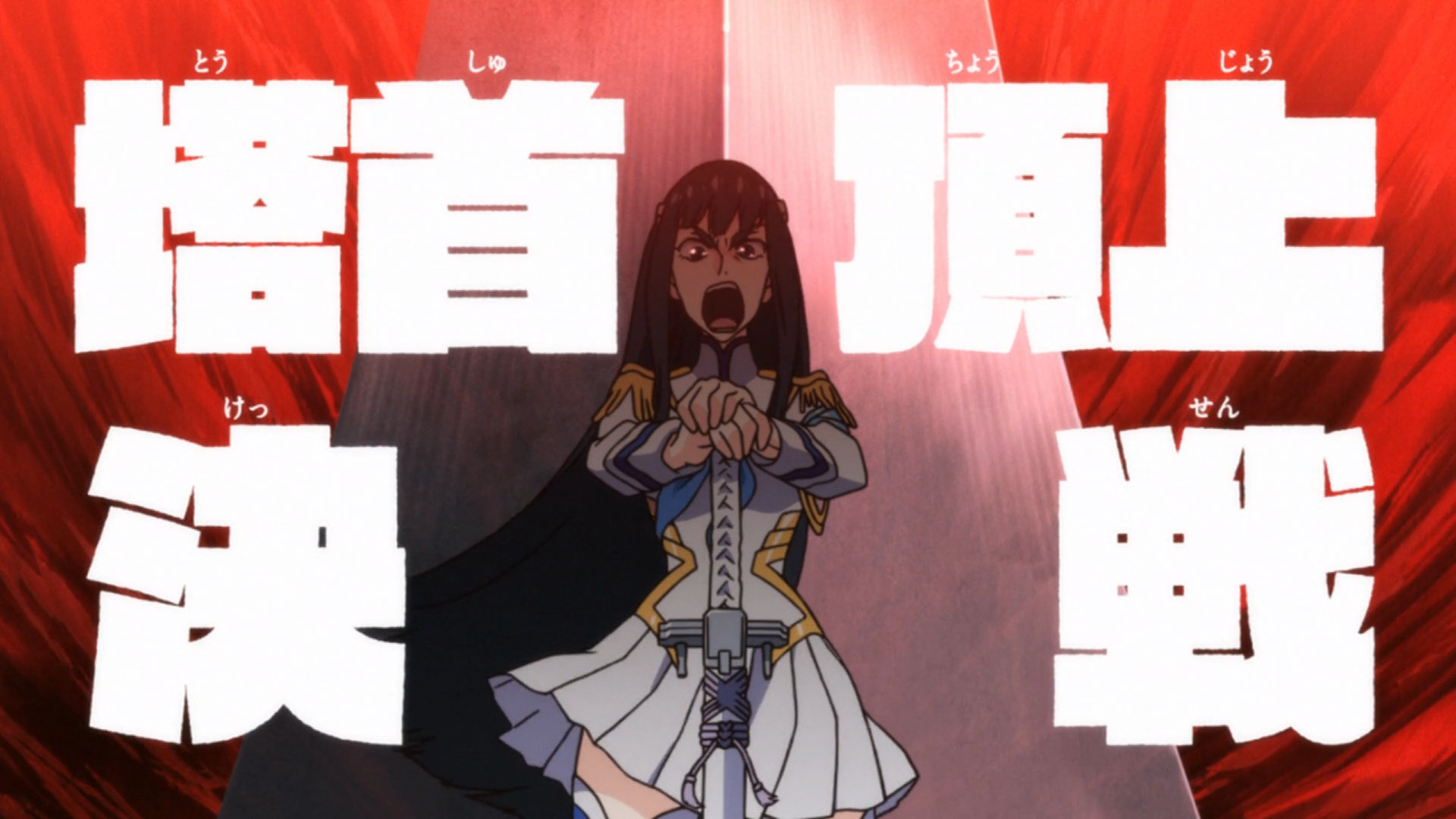
This pace really goes well with the action that is exhibited here: Kill la Kill has some of the best presentation. Being sent flying and causing massive collateral damage is a norm of the show, and you get a taste of that action within the first five minutes. The escalation of power in the combat is thrilling as it rises with the stakes, managing to dwarf the starting sequences even as wild as those are. These larger-than-life fights are a staple of anime and were introduced to me here; it's a highlight and a key appeal of the series. The soundtrack in particular adds to these sequences, as it has some of the best soundtracks in anime. From character themes like Don't Lose Your Way and Ki Ru A Kill to general tracks like K1llwaill and I Want to Know, Hiroyuki Sawano did an awesome job scoring this series. You also get some iconic openings with Sirius and Ambigious (especially Ambigious, what an intro). Kill la Kill is just such a great time. If you are fine with the fanservice and the other explicits then I give this an A+, it really is worth the watch and I think I still consider it a favorite. 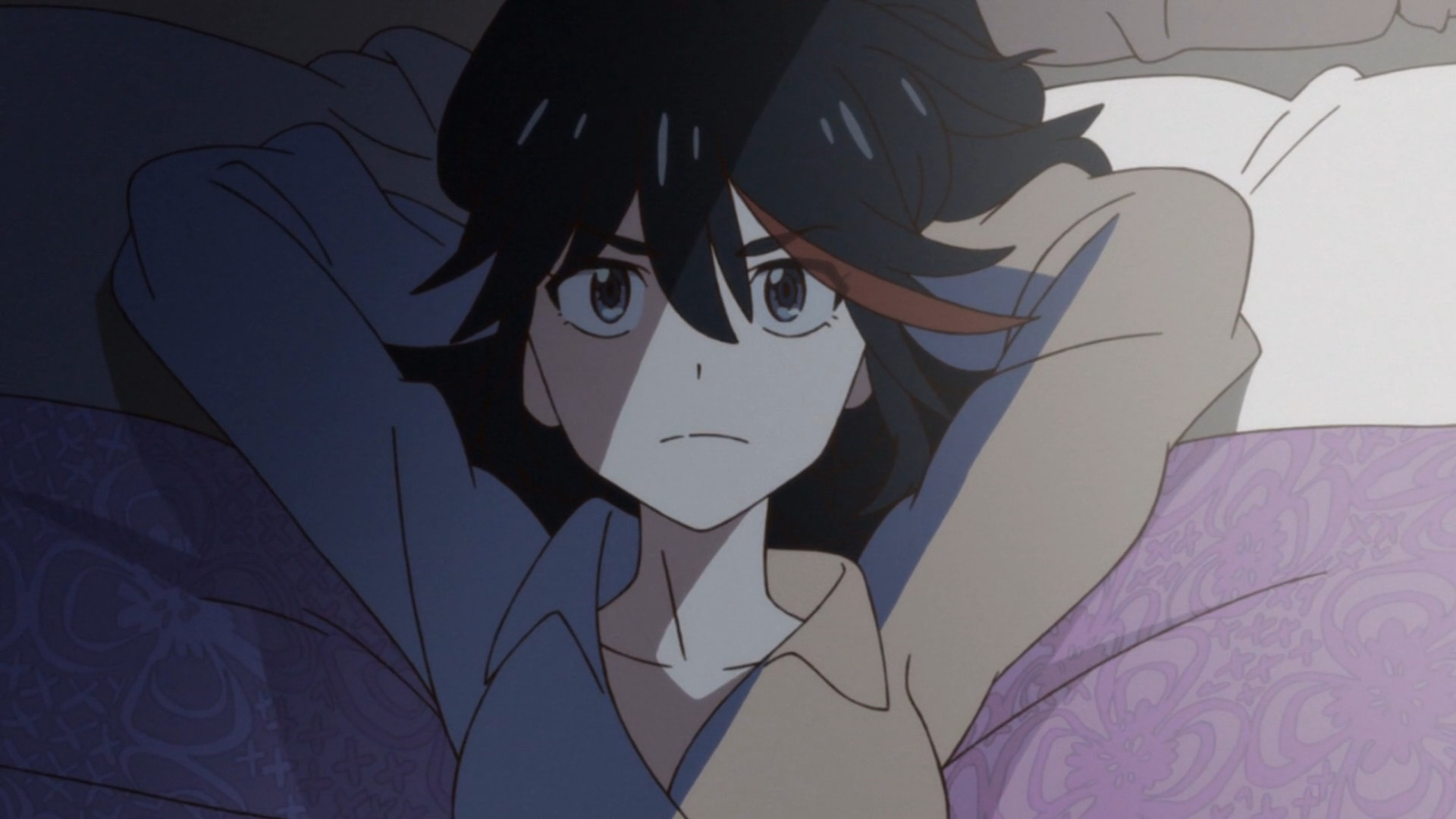
|
|
Exodite.org | 2023-2024





|
|